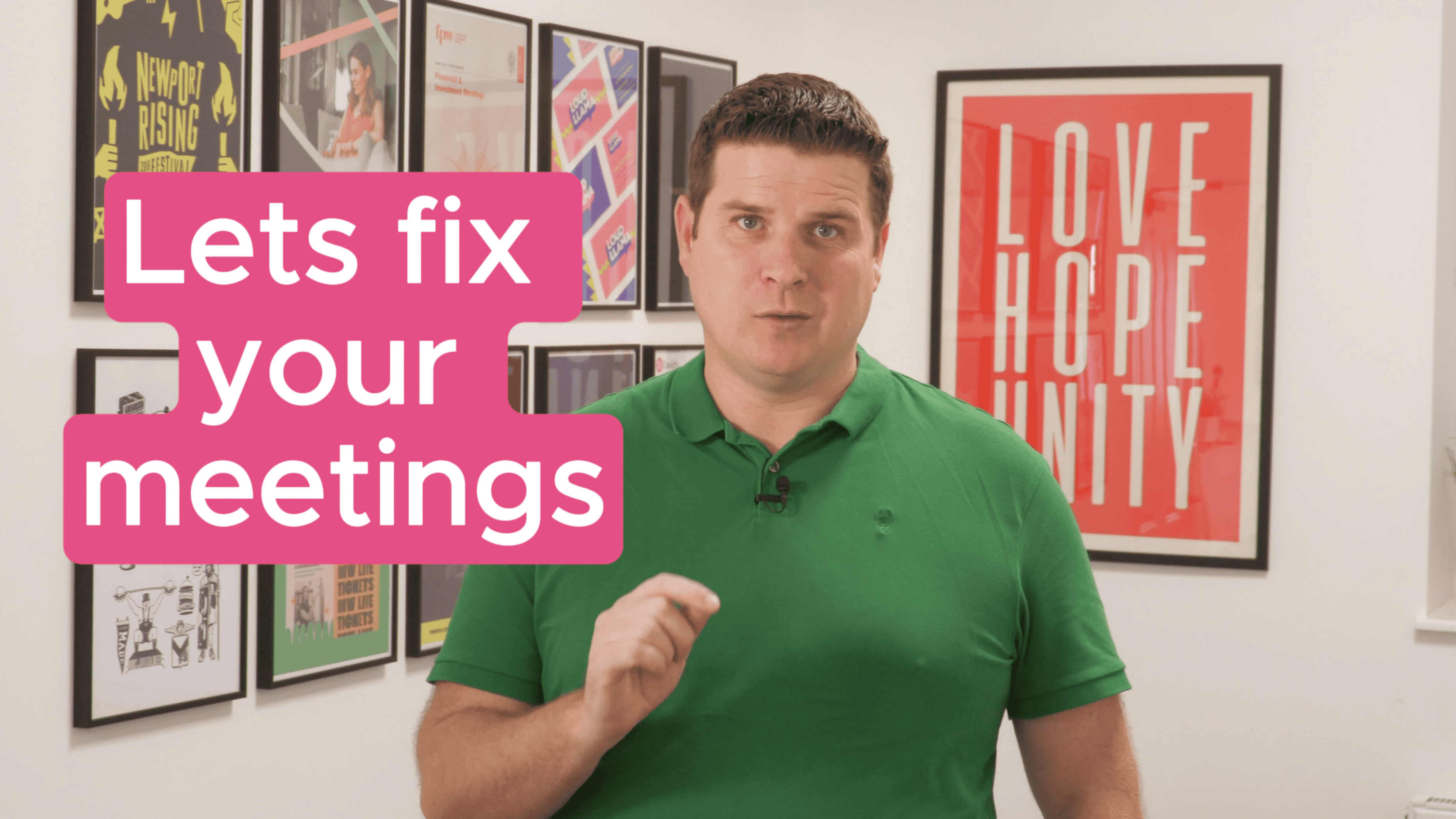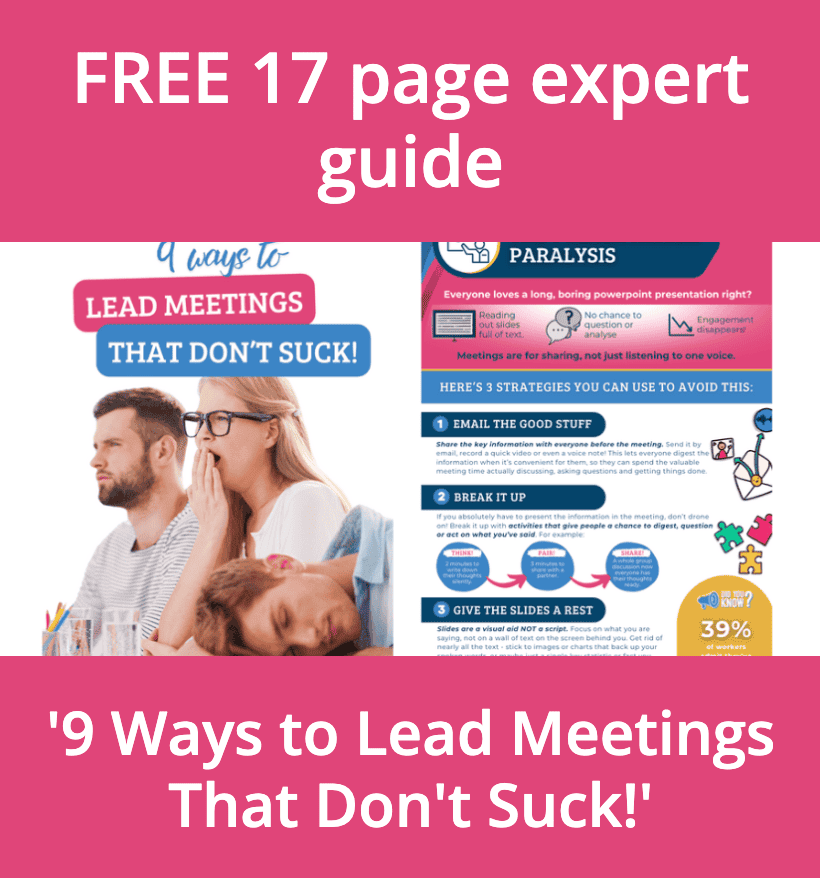Beyond 'Forced Fun': Why Icebreakers (Done Right) Are Still The Right Tool for Effective Meetings
Dec 13, 2024

Let's be honest, starting a meeting with the word "icebreaker" often elicits eye rolls and groans. We've all been there: forced to share our "most embarrassing moment" or build a tower out of spaghetti and marshmallows while silently questioning our career choices. It's no wonder they've earned a reputation for being cheesy, cringeworthy, and the epitome of ‘forced fun’. Anyone working in a corporate environment will have had their fair share of awkward icebreaker experiences in my time.
But what if I told you that, despite their bad rap, a good icebreaker can actually be a powerful tool for fostering engagement, sparking creativity and setting the stage for more productive discussions? Believe me, I was once a skeptic too. But after years of experimenting with different approaches whilst designing and delivering meetings and events for Google and Shopify, I've seen firsthand how the right icebreaker, used at the right time, can transform a meeting from a passive snoozefest into a dynamic and interactive session.
Why Do Icebreakers Get Such a Bad Rap?
The problem with many icebreakers isn't the concept itself, but rather the execution. Too often, they're:
- Irrelevant: They have no connection to the meeting's purpose or the participants' roles.
- Intrusive: They force people to share personal information they're not comfortable revealing.
- Time-Consuming: They eat up valuable meeting time without providing a clear benefit.
- Poorly Facilitated: They're introduced without explanation or enthusiasm, leaving participants feeling awkward and confused.
It's no wonder that so many people dread them. But icebreakers should not be about forcing fun, they're about creating a foundation for meaningful connection and collaboration. They are about breaking down barriers, both internal and external, to get people ready to engage.

- Timing is Everything:
- New Teams or Groups: Icebreakers are particularly valuable when team members are new to each other or haven't had much opportunity to interact. They help people learn names, build rapport, and establish a sense of psychological safety.
- Long Meetings or Workshops: A well-timed icebreaker can re-energize a flagging group, especially during long meetings or workshops where attention spans start to wane.
- Tense or Difficult Topics: If you're tackling a sensitive or challenging topic, a brief, lighthearted icebreaker can help guide people into a sharing mood and create a more relaxed atmosphere.
- Virtual Meetings: Icebreakers can be especially helpful in virtual settings where it can be harder to build connections. They help to humanize the experience and make participants feel more comfortable interacting online.

- Choose the Right Icebreaker:
- Align with Purpose: Select an icebreaker that aligns with the overall purpose of the meeting. For example, if you're brainstorming creative solutions, start with an activity that encourages out-of-the-box thinking. If you want people to share their opinions and concerns, start with an icebreaker that has easy, surface level sharing.
- Consider Your Audience: Take into account the personalities, roles, and cultural backgrounds of your participants. An icebreaker that works well for a group of extroverted salespeople might fall flat with a team of introverted engineers.
- Keep it Short and Sweet: Remember, the icebreaker is just a warm-up, not the main event. The icebreaker should take up no more than 10% of the time you have together
- Don’t over-use them: Not every meeting needs an icebreaker, use them when there’s a good reason, such as a new team or if you are planning a different type of meeting to what’s normal for your team.

- Facilitate with Enthusiasm and Clarity:
- Explain the "Why": Briefly explain the purpose of the icebreaker and how it connects to the meeting's objectives. This helps participants see the value and buy into the activity.
- Set Clear Instructions: Provide clear and concise instructions, ensuring everyone understands what they're supposed to do.
- Participate Yourself: As the facilitator, be an active participant in the icebreaker. This shows that you're invested in the process and helps to create a more relaxed and inclusive atmosphere.
- Debrief (Optional): Depending on the icebreaker and the meeting's purpose, you might want to have a brief debrief afterward. This can be as simple as asking, "What did you learn?" or "How did that activity make you feel?"
Examples of Icebreakers That Actually Work:
-
- Two Truths and a Lie: A classic for a reason, this icebreaker encourages people to share interesting facts about themselves while also injecting an element of fun and intrigue.
- One-Word Check-In: Ask participants to share one word that describes how they're feeling or what they hope to get out of the meeting. This is a quick and easy way to gauge the energy of the room and very useful in virtual settings to get everyone used to sharing in the chat or by unmuting.
- Rose, Bud, Thorn: Each person shares a "rose" (something positive), a "bud" (something they're looking forward to), and a "thorn" (a challenge they're facing). This allows for vulnerability and helps build empathy within the team.
- Values Card Sort: Participants sort a set of cards with different values (e.g., creativity, integrity, work/life balance) in order of importance and share their top three. This helps uncover core values and understand each other's motivations. You can even have them discard their least important value, and explain why they are happy to let that one go.
- Draw & Discuss: Provide a few prompts (e.g., “What are you proudest of?”, “What do you need from your team?” and ask everyone to draw their answers (stick men are fine, no bonus points for being Picasso!) before splitting into small groups and explaining your drawings.
Conculsion
Icebreakers, when thoughtfully chosen and skillfully facilitated, can be a powerful tool for breaking down barriers, fostering engagement, and setting the stage for more productive and enjoyable meetings. So, the next time you're planning a meeting, don't dismiss the icebreaker as mere "forced fun." Embrace it as an opportunity to create a more connected, collaborative, and ultimately, more successful team.
Ready to ditch the awkward icebreakers and discover a world of engaging meeting strategies that actually work? Download our free ebook, '9 Ways to Lead Meetings That Don't Suck!' And if you're ready to revolutionize your organization's meeting culture, book a free consultation with MeetBetter today. Let's work together to make your meetings something people actually look forward to!
More like this
Your FREE guide to running effective, engaging and collaborative meetings.
The 9 most common meeting frustrations, explained and solved.
The same strategies and activities our facilitator used to run events and meetings for Google and Shopify.
Easy to follow, easy to implement.

What do we know about meetings?

Hi, I'm Guto Aaron. Over the years, I’ve been a lawyer, a school teacher and worked at startups, small businesses and in big tech. In every industry, profession and continent I worked on, most meetings were soul-crushing, productivity black holes.
After years of battling such ineffective meetings, I realised something had to change. I spent a decade designing and leading impactful meetings and events for Google and Shopify and have now made it my mission to help as many leaders, businesses and organisations as possible, lead effective, impactful and engaging meetings!







